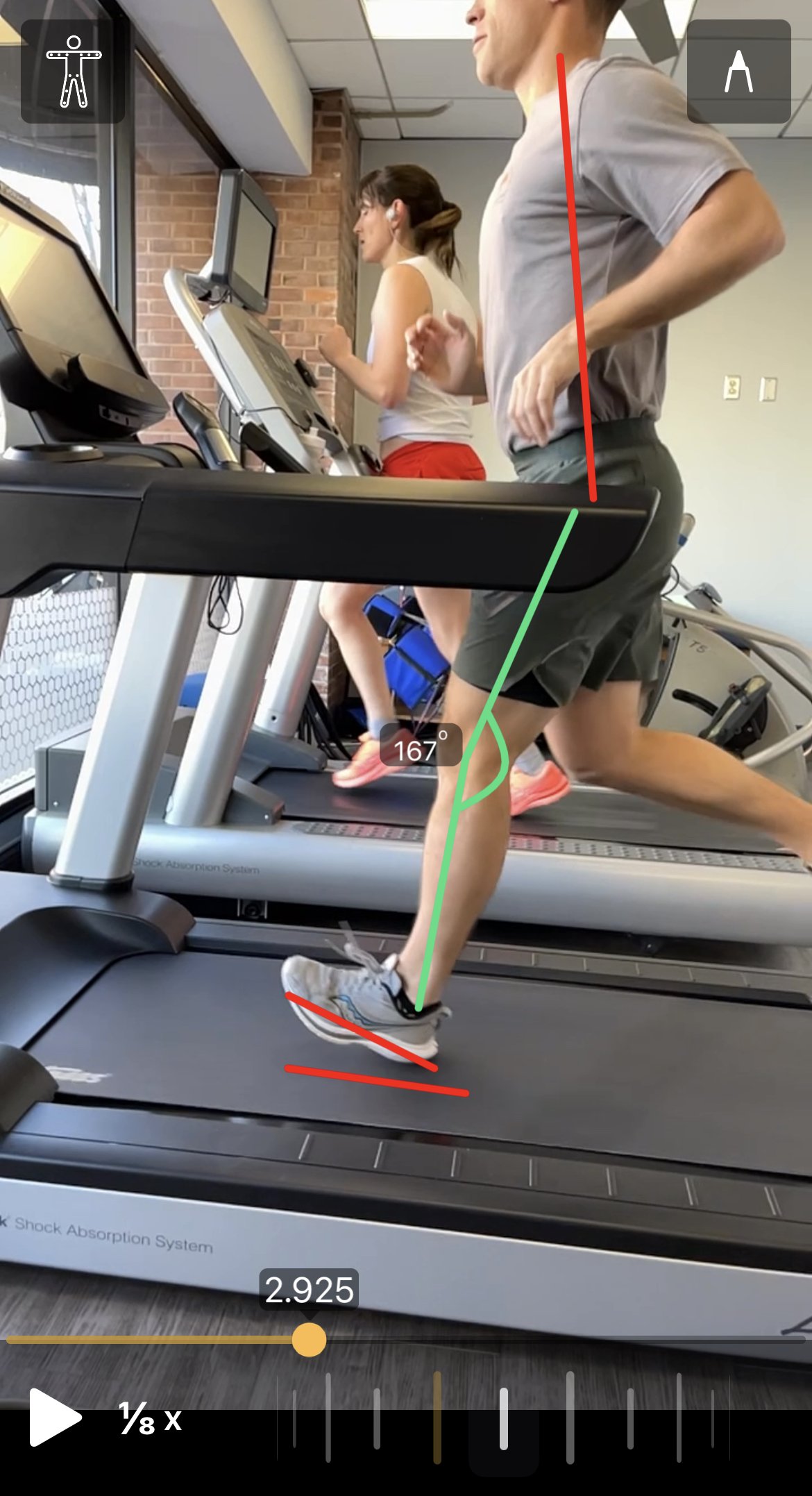Performance physical therapy is an effective tool for runners to improve their running experience and reduce their risk of injury. By targeting the underlying cause of pain, reducing inflammation, and increasing strength and flexibility, performance physical therapy can help runners stay healthy and happy out on the trails.
Analysis and diagnosis of running injuries.
Performance physical therapy begins with an analysis of the injury sustained while running. During this process, a licensed physical therapist will assess your running and injury history, movement patterns, strength and range of motion to accurately diagnose the cause of injury. By understanding the root cause of the pain, they can better determine the right course of action for rehabilitation.
After the injury has been correctly identified, your physical therapist will work with you to identify and address the underlying drivers of your pain through the creation of a unique treatment plan based on your individual needs for performance and running. This may include gait and running analysis, flexibility, muscle strengthening exercises, manual therapy techniques and dry needling for increased recovery and enhanced function.
Additionally, you may be given guidance on proper running form to modify the current pain to keep you running AND prevent future injuries to promote more optimal movements while running. With these strategies in place, your physical therapist helps manage symptoms of pain while improving overall fitness and mobility.
Strengthening exercises to build up weak muscle groups and reduce the risk of re-injury
Weak muscles are often the underlying cause of running injuries, so it’s important that you strengthen the relevant areas to reduce your injury risk. In fact, asystematic review by Lauersen et al in 2013 noted strength training was found to reduce sports injuries by less than 33% and overuse injuries by almost 50%.
Through performance physical therapy, you’ll be provided with an individualized strengthening program to help you build up any weak muscle groups. There are no secret exercises! The key is to keep it simple, be consistent and teach you how to move to maximize the potential of each exercise. A typical program can include exercises for your lower body such as squats, lunges, and calf raises or exercises for your upper body such as rowing and push-ups. Regularly performing these exercises will help you improve the strength of muscles and reduce the risk of re-injury.
In addition to strengthening exercises, our performance physical therapists may also provide you with dynamic stretches and foam rolling techniques that can help you increase your flexibility needed to efficiently run. For example, having reduced ankle mobility is a common risk factor for numerous running related injuries such as achilles tendinitis, plantar fasciitis and patellar pain.
Lastly, You’ll also receive advice on training strategies or modifications, and recovery techniques to optimize your performance and reduce the risk of injuries or soreness. Looking at your training program to evaluate it for injury risk goes way beyond tallying miles. We will check the ratio of hard to easy running, the rate of perceived exertion and recovery, etc. With this comprehensive approach to physical therapy for runners, you’re sure to reach your performance goals with minimal discomfort or re-injury.
Education on correct running form, techniques and equipment use to prevent injury in the future.
Performance physical therapy not only helps you heal but also educates you on how to prevent the same injury from happening again. Specific running form characteristics have been strongly linked to running related injuries. They are increased forces from landing, the position of your knee and foot as they contact the ground as well as the posture of your pelvis and torso. We will evaluate your running gait on a treadmill using a video analysis app to measure body ankles, positions through all phases of your stride. During your plan of care, your physical therapist will teach you about proper running form, which puts less stress and strain on your bones,tendons, joints and muscles.
Conclusion
Performance physical therapy is more than just alleviating your pain. We want to move you from injured to healthy and ready to take on your next PR or running challenge! Our comprehensive approach will see you feeling better and set up to stay that way for years to come!
Are you ready to become a stronger, healthier, happier running? The first step is getting in touch!

